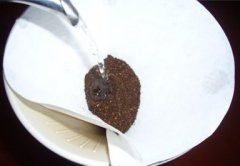Don't add milk to the problems that should be paid attention to when tasting coffee

(1) No milk
Milk is one of the most widely used coffee condiments. Traditionally, milk has never been added to coffee in some countries such as Yemen, Ethiopia and Turkey.
It is widely believed that milk was first added to coffee by Monin in Grenoble in 1685. In the mid-1980s, 57% of people in the United States drank coffee with milk, while 81% of people in Germany added milk to their coffee. These figures are interesting because German coffee is of much higher quality than American coffee. An even more amazing fact is that 27% of Americans and 43% of Germans add sugar to their coffee.
The fat in whole milk obscures the subtle taste of coffee, so use half-fat or low-fat milk during the day. Pay attention to the temperature of the milk. Milk that is not rolled up because of the heat can add a tasty and smooth feeling to the coffee.
Although in the general eyes, milk is the companion of coffee. But it can not be tasted with coffee, because it will affect the taste, seriously affect the taste effect.
In some cases, coffee with small particles should be drunk without milk, while coffee with large particles should be served with milk.
But in the evaluation, never add milk.
(2) drink while it is hot
"drink while it's hot" is a necessary condition for tasting delicious coffee, even on a hot summer day. When the coffee is cold, the flavor decreases. So when brewing coffee, in order not to reduce the taste of coffee, it is necessary to heat the coffee in boiling water in advance. The appropriate temperature for coffee is 83 ℃ at the moment of brewing, while the temperature to the mouth is 61-62 ℃.
(3) appropriate amount
Tasting delicious coffee, in addition to paying attention to the appropriate temperature, but also have appropriate portions, drinking coffee without drinking or drinking fruit juice, a full cup of coffee, look at the loss of interest in drinking, usually only to seven or eight points full for the right amount. Moderate amounts of coffee will not only stimulate the taste, but also will not have a "greasy" feeling after drinking, but endless aftertaste. At the same time, the right amount of coffee can moderately promote the body to recover from fatigue and refresh the mind.
Coffee has different flavors, so you can't drink three or four cups in a row like tea or cola. The amount of coffee for ordinary drinking is 80ml / 100ml. Sometimes if you want to drink three or four cups in a row, you have to dilute the concentration of the coffee, or add a lot of milk. However, it is still necessary to increase or decrease the concentration of coffee according to the degree of physical demand, and there might as well be more changes in the allocation of sugar to make the coffee more delicious.
Important Notice :
前街咖啡 FrontStreet Coffee has moved to new addredd:
FrontStreet Coffee Address: 315,Donghua East Road,GuangZhou
Tel:020 38364473
- Prev

Red coffee and red coffee.
Unexpectedly, there is still red coffee!
- Next

How to taste coffee at home you need three sets of cups
Invite two friends to taste three kinds of coffee. Don't try to look for fundamental differences for the first taste, but consider identifying the main features, such as South American coffee or Asian coffee. For example, coffee in Ethiopia is high in acidity but light in weight, while coffee in Sumatran is low in acidity but full of grains. You need 3 sets of cups (3 cups each-white, most
Related
- Beginners will see the "Coffee pull flower" guide!
- What is the difference between ice blog purified milk and ordinary milk coffee?
- Why is the Philippines the largest producer of crops in Liberia?
- For coffee extraction, should the fine powder be retained?
- How does extracted espresso fill pressed powder? How much strength does it take to press the powder?
- How to make jasmine cold extract coffee? Is the jasmine + latte good?
- Will this little toy really make the coffee taste better? How does Lily Drip affect coffee extraction?
- Will the action of slapping the filter cup also affect coffee extraction?
- What's the difference between powder-to-water ratio and powder-to-liquid ratio?
- What is the Ethiopian local species? What does it have to do with Heirloom native species?

